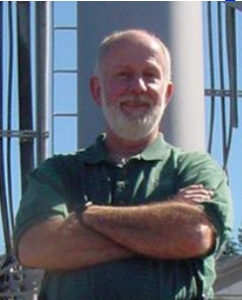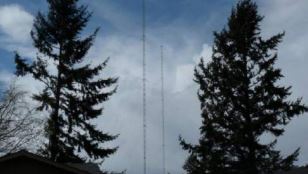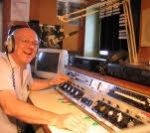AM Revitalization: Going Back to the Future?

[April 2015] Ever since FCC Commissioner Ajit Pai announced his i support of AM Revitalization, stations around the country have been hoping the Commission will actually do something to help them. Clay Freinwald looks at the local situation in Western Washington, and sees a trend – backward.
You probably have read about some FCC Commissioners’ efforts at trying to find a solution to the current state of AM Radio. Some are calling for faster action on petitions, more power (especially for small and daytime stations), and FM translators for AM stations – though how that helps revitalize AM is unclear.
Could it be that the future of AM Radio is being played out right here in our backyard? Could it be that despite the remarks made recently by FCC officials, a process of elimination of the weakest is the route that will be followed? If what is going on here locally is any indication, it could be that efforts at revitalization of the AM band are too-little-too late.
Let me explain.
Lose the Lease, Go Dark
In what seems like a trend, KNTB, licensed to Lakewood, Washington on 1480 kHz has gone dark because the station did not own the land under the towers and the landowner determined more money could be made by other means.

Soon the station’s two 150-foot towers, pictured here just after the station went silent, will be coming down to be replaced by another cluster of houses.
It is interesting to note that this station first went on the air in 1958 as KFHA and was the first “Daytimer” in the Tacoma area – sandwiched in between 1470 in Centralia and 1490 in Bremerton. In later years the station operated at 1 kW daytime and 111 Watts at night, with coverage very limited due to the extremely poor ground conductivity in the Lakewood area (under a .5).
Silenced also was an FM translator, K221FJ, located on the KBTC Tower in Tacoma on 92.1. Co-owned stations KBRO In Bremerton and KLDY in Lacey also went off the air
A Close Call
The AM station in Kirkland WA, KARR 1460, also went dark not long ago because that station did not own the land under its towers.
However, this station has bucked the trend and returned to the air through the efforts of Jim Dalke – albeit from a new site, with a temporary antenna.
Other stations in the area, KWLE, 1340 in Anacortes (formerly KAGT) and KRPA, 1110 in Oak Harbor have recently been off due to economic issues and you have at least five Western Washington AM’s that are either silent or are on the verge.
Back when AM Ruled
Having the benefit of spending well over 50 years in this business I believe I can see how this process appears to be going “full-loop.”
I really started digging into what was on the air when I was living in Tacoma, back in the late 1950’s. At that time we had the following local stations: KTAC/850, KMO/1360 and KTNT/ 1400. There also were two suburban stations KFHA, a daytimer in Lakewood and a little station in Puyallup, KAYE. The one FM – KTNT – was a simulcast of KTNT-AM.
That was about it.
Looking around the area at the time, the smaller markets south of Seattle each had one or perhaps two radio stations, each operated to serve a relatively small area – and they did that quite well. Back then it was financially viable to operate a local radio station.
A Turning Point
Then FM came along in these areas.
Initially growth was slow at first, with limited coverage and listeners. Slowly, habits changed and with it the viability of a local AM Radio station started to erode. Then FM’s increased power and coverage, moving to much higher transmitter sites, implemented stereo, and added better programming.
Soon the small AM with a limited coverage areas began down the road that we have recently been witnessing, leaving only those AM’s that cover large areas surviving. However, more recently, as can be seen in the ratings I report on periodically, the big AM’s are finding themselves fading from favor.
Not only have we recently seen a number of smaller AM’s go silent, but we have seen many historic community AM’s move away from a community broadcasting to something that is economically viable: specialty broadcasting. For example, KGY in Olympia is now a Catholic religious station, the 1450 in Puyallup programs Korean, the 1210 in Auburn programs Latino, and the list goes on.
Holding Back the Tide
There are exceptions to the trend that should be noted – among them KELA in Centralia and KLAY in Tacoma, stations that still appear to be community AM radio stations.
Yet, one can only wonder how long they have before they too will suffer the same fate? Then again, in the case of KELA, perhaps KMNT (their FM stable mate) is carrying the AM.
As I look into my crystal ball, it does not bode well for smaller, limited coverage, AM’s. In our area we are perhaps unique in that we have an abnormally high number of high-powered AM’s and they tend to be doing a bit better. Still, they too are clearly watching the grim reaper that appears to be headed their way.
They Got What They Asked For
I find all of this very interesting as I vividly recall when many would-be broadcasters were begging the FCC to break up the clear channels, petitioning for 1 kW fulltime for Class 4’s, and paying thousands to consultants to squeeze in an AM with radical directional patterns and some major day/night coverage differences.
Now many of these same stations are going dark and we are getting back to the way it was. The future is likely to see a radical reduction in the number of AM’s.
Perhaps this is a good thing, as it will permit those that survive to increase power, perhaps shedding their restrictive and expensive to operate multiple-tower directional antennas, and with that beat back the ever increasing noise levels on the historic band.
Perhaps AM will survive, and perhaps it will look a whole lot like it did back when I started? Dare I use the expression – Back to the Future?
– – –
Clay Freinwald, a frequent contributor to The BDR, is a veteran Seattle market engineer who continues to serve clients from standalone stations to multi-station sites. You can contact Clay at K7CR@blarg.net
am, am radio, am revitalization, back to the future, business
